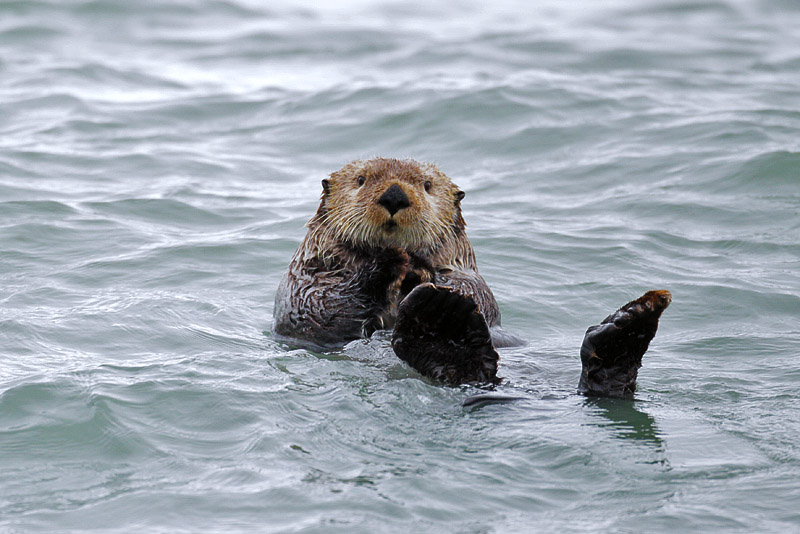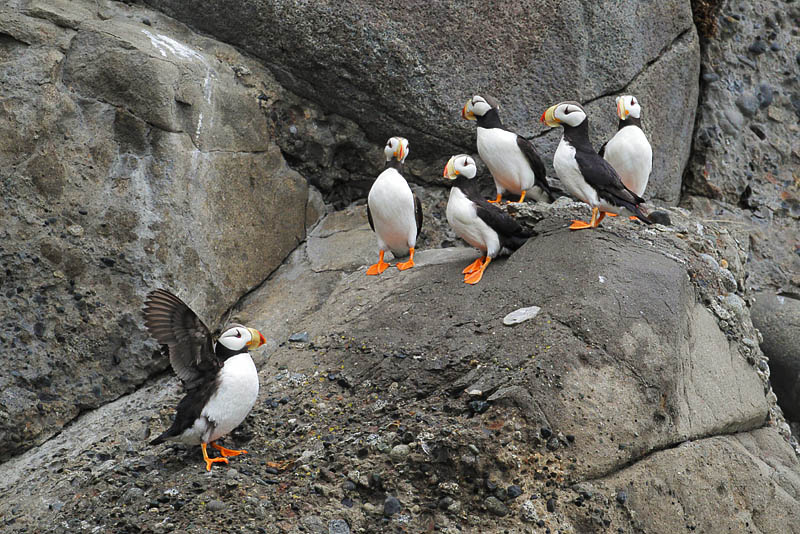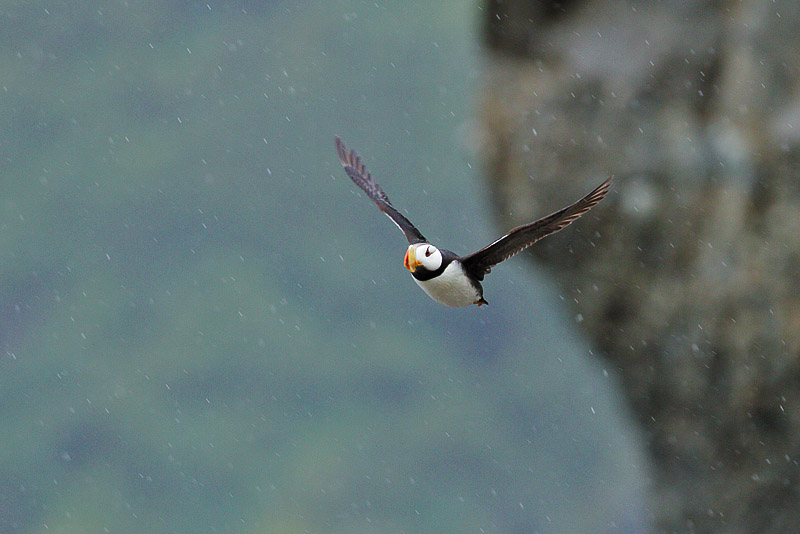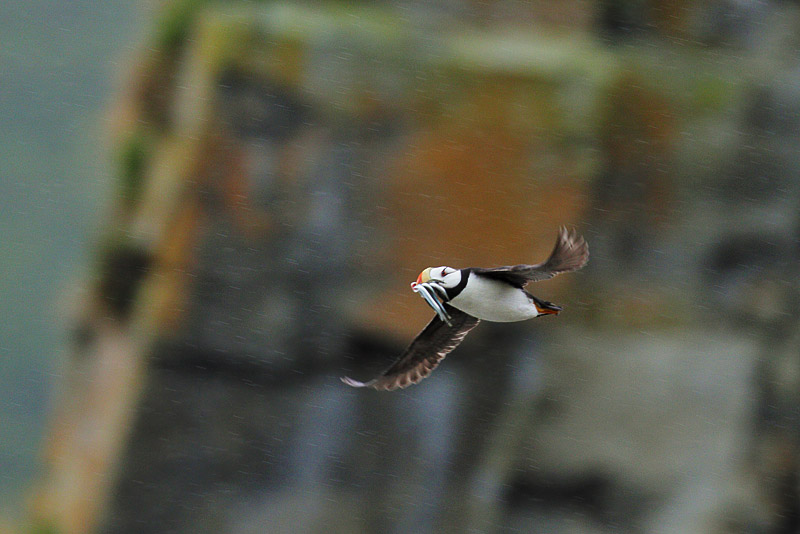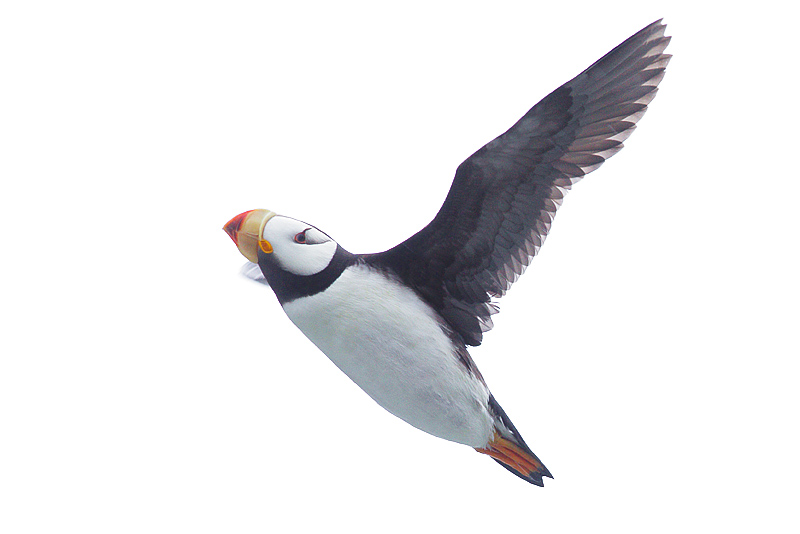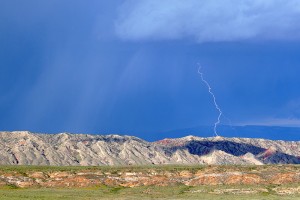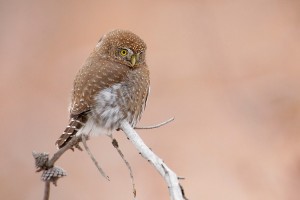Canon Eos 1dmk4, EF 500mm F4 IS, ISO 800, 1/500th @ F4
On each of my “Coastal Bears of Alaska” tours we take one day and visit a small island in Cook Inlet that has a nesting colony of horned puffins, common murres, a few tufted puffins and other seabirds. With the unrelenting weather I was concerned we’d miss the trip this year. On Sunday we had a slight break in the wind and had the proper tides so we were able to make a quick trip to the island. As we approached the island we noticed this sea otter. Trying to capture a sharp image handholding a 500mm on a violently rocking boat was no easy task but I dd manage a few sharp images.
Canon Eos 1d mk4, EF500mm F4 IS, ISO 1000, 1/640 @ F4
We were able to make a landing on the leeward side of the island and spent a couple of hours in the wind and driving rain trying to capture some decent puffin images. In the image above I saw this grouping of horned puffins which gave me a very nice composition with a strong diagonal element and birds at the power points. When the bird in the lower left flapped his wings I fired off a burst.
Canon Eos 7d, EF300mm F2.8 IS, ISO 800, 1/1000 @ F3.5
After working on a number of perching images I thought I would try my luck at capturing flight images. With the low light and contrast levels I knew it would be difficult to capture these flying bullets. I found I had my best luck handholding the Eos 7d and the EF 300mm F2.8L IS. This was an impressive combo and I was able to track the fast-moving puffins as long as I could keep the AF sensors on the bird. I used manual selection of single AF points with expansion. Acquiring focus of a bird small in the frame against a busy background was difficult for both the 7d and 1dmk4. Others in the group using a variety of cameras and lens combos had little or no luck.
Canon Eos 7d, EF300mm F2.8L IS, ISO 800, 1/800th @ F3.5
I really wanted to capture an image of a puffin flying with a beak full of fish. Fortunately I was able to pull this off and managed a few real nice ones.
Canon Eos 7d, EF300mm F2.8 IS, ISO 800, 1/800 @ F3.5
When the bird flew against the featureless overcast sky the AF grabbed the subject easily. This type of image is called high key. In any autoexposure mode this image would be way underexposed. I found a good exposure by spot metering a mid-tone and set that exposure in the camera in manual exposure mode which allowed us to get consistent exposures.
